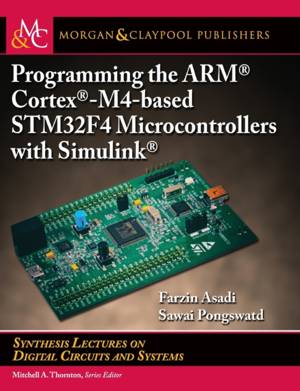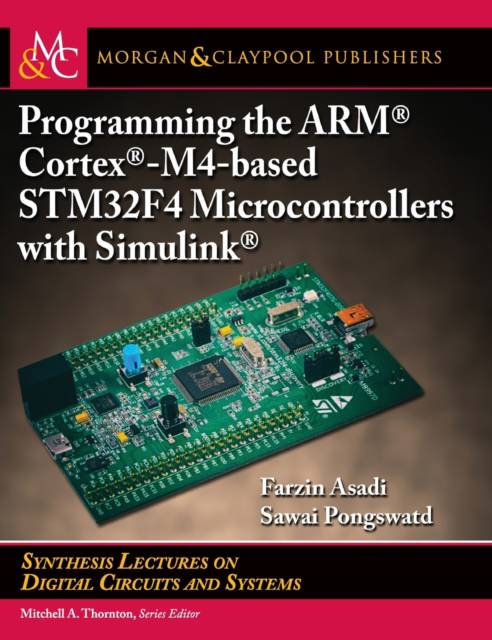
- Retrait gratuit dans votre magasin Club
- 7.000.000 titres dans notre catalogue
- Payer en toute sécurité
- Toujours un magasin près de chez vous
- Retrait gratuit dans votre magasin Club
- 7.000.0000 titres dans notre catalogue
- Payer en toute sécurité
- Toujours un magasin près de chez vous
Programming the ARM(R) Cortex(R)-M4-based STM32F4 Microcontrollers with Simulink(R)
Farzin Asadi, Sawai PongswatdDescription
A microcontroller is a compact, integrated circuit designed to govern a specific operation in an embedded system. A typical microcontroller includes a processor, memory, and input/output (I/O) peripherals on a single chip.
When they first became available, microcontrollers solely used Assembly language. Today, the C programming language (and some other high-level languages) can be used as well. Some of advanced microcontrollers support another programming technique as well: Graphical programming. In graphical programming, the user does not write any code but draws the block diagram of the system he wants. Then a software converts the drawn block diagram into a suitable code for the target device.
Programming microcontrollers using graphical programming is quite easier than programming in C or Assembly. You can implement a complex system within hours with graphical programming while its implementation in C may take months. These features make the graphical programming an important option for engineers.
This book study the graphical programming of STM32F4 high-performance microcontrollers with the aid of Simulink and Waijung blockset. Students of engineering (for instance, electrical, biomedical, mechatronics and robotic to name a few), engineers who work in industry, and anyone who want to learn the graphical programming of STM32F4 can benefit from this book. Prerequisite for this book is the basic knowledge of MATLAB Simulink.
Spécifications
Parties prenantes
- Auteur(s) :
- Editeur:
Contenu
- Nombre de pages :
- 184
- Langue:
- Anglais
- Collection :
Caractéristiques
- EAN:
- 9781636392462
- Date de parution :
- 18-10-21
- Format:
- Livre relié
- Format numérique:
- Genaaid
- Dimensions :
- 190 mm x 235 mm
- Poids :
- 535 g

Les avis
Nous publions uniquement les avis qui respectent les conditions requises. Consultez nos conditions pour les avis.






